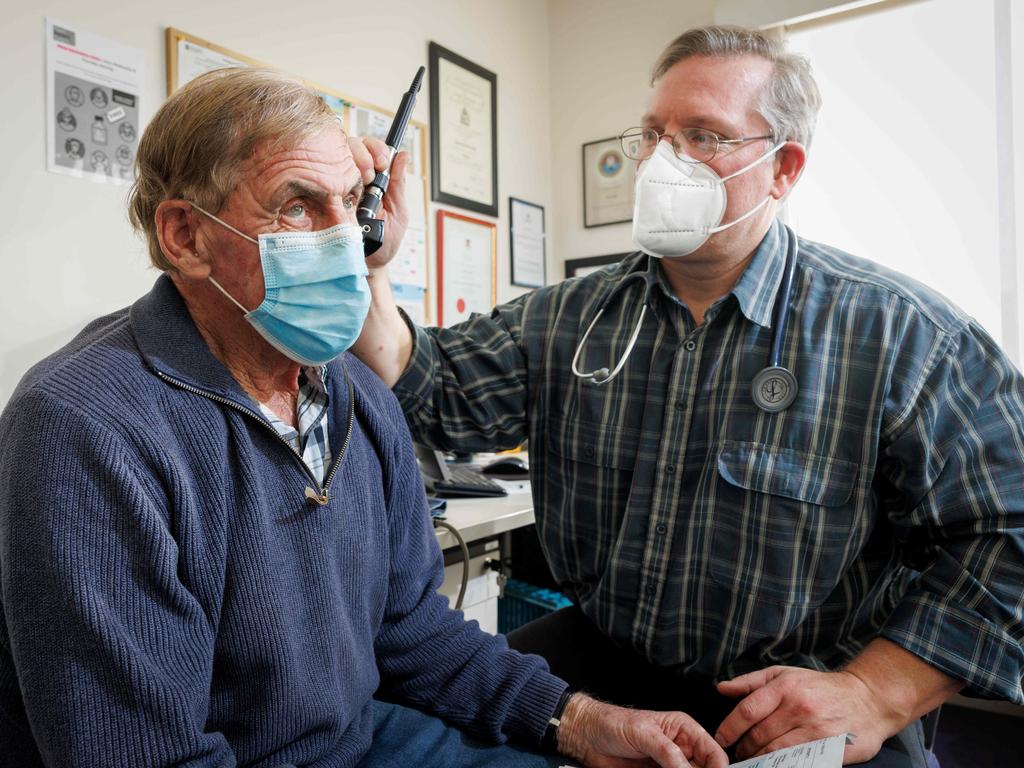Doctors demand membership fees for access to bulk billing clinics
Patients are being charged upfront ‘membership fees’ of up to $170 to access bulk-billing medical clinics as the primary care crisis deepens.

Patients are being charged upfront “membership fees” of up to $170 to access bulk-billing medical clinics as the primary care crisis deepens, increasing the cost burden of seeing a doctor on those who can least afford it.
A national report has found that almost 100 clinics nationwide are charging either sign-on fees or monthly or yearly membership fees to patients who want to access bulk-billing services. The fees range from an average upfront cost of $60 in South Australia to an average of $167 in Tasmania.
The fees raise potential questions as to their legality, as the nation’s Health Insurance Act disallows any additional charge being levelled for a service if a practitioner bulk bills for that service. “An annual administration or registration fee is not permitted to guarantee bulk-billed services to patients,” a federal health department fact sheet says.
The existence of the membership fee phenomenon has come to light as a result of a national surveillance conducted by the organisation Cleanbill, which gathers and reports data on bulk billing and other trends in primary care.
The Cleanbill report describes these GP practices as “membership clinics that bulk bill all of their non-concession adult patients, provided these patients pay some sort of membership fee to access the clinic”. The exact membership models or structures are not clear from the report so it is impossible to say whether the clinics are operating entirely within Medicare rules or not.
The fees place bulk billing further out of reach of some of the most disadvantaged people in the country, with one in seven people who need to see a GP now not able to do so because of the cost.
“Under a membership fee structure, the out-of-pocket fees that would ultimately be paid to the clinic over a course of care are concentrated in the cost for an initial appointment. While this is preferable for regular patients, any new patient seeking a one-off appointment has to cover a significant upfront cost to access the clinic that might otherwise be defrayed over multiple appointments,” the Cleanbill report says. “Because these clinics are regularly reported as – and listed on directories as – wholly bulk billing, this initial bill will come as a shock, further decreasing accessibility of care.”
The national rate of bulk billing has been declining steeply in Australia, falling from 82 per cent to 76.5 per cent between 2022 and 2023, but the rate of routine bulk billing for every patient or consultation within clinics is much, much lower. Many hundreds of clinics that previously bulk billed have stopped doing so in the past couple of years.
While some protection has been provided for those on welfare and children in the federal government’s tripling of bulk-billing incentives to doctor, for many working families the cost of seeing a doctor is now unattainable, and accessing bulk billing extremely difficult.
Gap fees are on average more than $40 a visit, and there is evidence that cancers and other potentially deadly conditions are being missed, and patients are having strokes and heart attacks when unable to access primary care.
Membership fees have been described by medical bodies as a way to claw back income amid a deeply depressed level of Medicare rebate per consultation for GPs, owing to inadequate indexation and years of freezes on rebate increases.
“It has been clear for some time now that the cost of providing a consultation with a GP is greater than the bulk-billing rebate in many cases. I understand why practices need to find other ways of remaining financially viable if they want to bulk bill patients,” said Australian Medical Association president Steve Robson. “Many vulnerable patients who need regular care with doctors obviously want access to visits with a doctor that they can afford. We’re at a point where many Australians are desperate.”
Royal Australian College of GPs vice-president, Associate Professor Michael Clements, said general practices were free to determine their own practice and billing models to remain viable and keep their doors open.
“If practices are billing Medicare, they need to comply with Medicare regulations,” he said.
“We know practices Australia-wide have been affected by decades of underfunding. Patients’ Medicare rebates haven’t kept up with inflation and don’t cover the full cost of patient care. This is why gap fees are increasing and we saw bulk billing collapse, although the government’s tripling of bulk-billing incentives has helped arrest the decline.
“Ultimately, everyone needs a GP and access to affordable general practice care.”






To join the conversation, please log in. Don't have an account? Register
Join the conversation, you are commenting as Logout